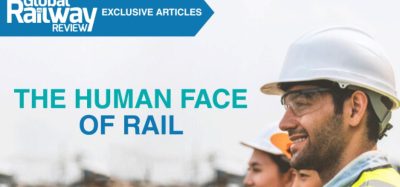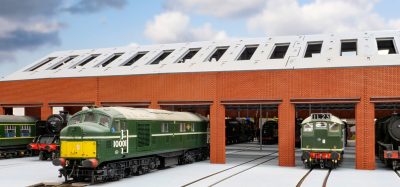OFF THE RAILS: Austrade’s David Fisken
Posted: 7 March 2024 | Emily Budgen | No comments yet
In this week’s installment of ‘Off the Rails’, I spoke to David Fisken, Investment Director for UK and Ireland at the Austrade.


How is the Sydney Metro project creating jobs in construction?
Sydney Metro is Australia’s biggest public transport project and first fully automated metro rail system. It will deliver four new rail lines totalling 113km and 46 stations, boosting Sydney’s rail capacity up to 60% by 2024.
Of the 4 lines, one has been operational since 2019 (North West), one will complete this year (City and Southwest) and two are under construction – Sydney Metro West and Western Sydney Airport, with contract opportunities available on both.
Sydney Metro West is the new 24 km underground railway that will connect Greater Parramatta and the Sydney CBD. Opening in 2032, this line alone is expected to create about 10,000 direct and 70,000 indirect jobs during construction.
The 23 km Western Sydney Airport line is also under construction and supporting more than 14,000 jobs. Connecting the new Western Sydney International Airport and the existing Sydney Metro system, this is the first rail project in Australia to be certified carbon-neutral from the start of construction through to operation in 2026.
How does the focus on accompanying infrastructure, such as station developments, help the local and national economy?
Sydney Metro has designed, planned and delivered stations with integration with the growing local communities they serve in mind.
Sydney Metro has produced a Community Benefit Plan. For Sydney Metro West for example, this highlights a focus on local benefits of: relieving congestion on existing rail lines; doubling capacity between Paramatta and Sydney’s central business district (CBD); linking new communities to rail services; supporting employment growth and housing supply; boosting economic opportunities for Greater Parramatta, and supporting new residential and employment zones along the Greater Parramatta to Sydney CBD corridor. The City and Southwest line includes integrated station and precinct development. Overall the project is better connecting people across Greater Sydney to areas of employment growth. The project has also brought significant over-station development opportunities with retail, office and residential developments planned and under way.
For the national economy, as Australia’s largest public transport project, the Sydney Metro investment is playing a huge part as an infrastructure solution in addressing Australian population (urban) growth challenges. Over the decade to 2032, Australia’s population is projected to increase by 3.8 million to just under 30 million people – equivalent to an annual growth rate of 1.4%.
Projects like this are also making a marked contribution to Australia’s net zero targets and energy transition. The Australian Government has set a target of reducing emissions by 43% by 2030 from 2005 levels. The Sydney Metro project is supporting these objectives through reducing emissions, particularly in road transport. For Sydney Metro West alone, this will mean an estimated 83,000 fewer car trips expected every weekday by 2036.
What does the free trade agreement between Australia and the UK mean for UK companies looking to invest in Australian rail?
The came into force on the 31st May 2023. Key benefits for UK companies include:
- Removal of tariffs on over 99% of Australian exports to the UK and on all UK exports to Australia
- A level playing field for bidding for public contracts in Australia
- In talent mobility, new visa provisions to enable intra-company transfers and a new visa pathway to Australia for innovators from the UK
- Improved digital trade and benefits in innovation exchange
The UK is already Australia’s second largest foreign direct investor. Many UK companies in the rail supply chain are active in Australia, including Arup, Laing O’Rourke, Mott Macdonald, Network Rail Consulting, Ricardo and Unipart. With a $155 billion rail investment pipeline within the next 15 years, a National Rail Manufacturing Plan, momentum to address challenges in the rail network around interoperability and harmonisation, and now with the benefits of the FTA, there’s never been a better time for UK rail supply chain companies to look at Australia.
Further benefits for UK companies looking to do business in Australia include its location – Australia is an ideal springboard to start trading in the wider Asia Pacific region – and for the UK’s Department for Business and Trade, Australia is a priority market for exports, ensuring support from both DBT (exports) and Austrade (investment).
Melbourne will soon have a new ‘suburban rail loop’ (ARA), what economic opportunities will this open for the area?
The Melbourne Suburban Rail Loop will help reshape Melbourne from a city centred around a single CBD, to a ‘city of centres’. The plan is for 90km of new rail line, 15 new stations, involving 3 sections and a new rail link to Melbourne Airport to be fully complete by 2035.
The first of these – SRL East has budget approval and construction has commenced with contract opportunities available. From Cheltenham to Box Hill, SRL East will connect major employment, health, education and retail destinations in Melbourne’s east and southeast, whilst reducing travel times.
Key economic opportunities from the SRL project include: attracting more businesses, retail activity and housing to the areas around each station, and creating more jobs in established areas where people want to live, ultimately helping Melbourne grow in a planned and sustainable way.
What is the current state of Australia’s rail freight?
Rail is the major carrier of goods and is responsible for about 49% of total domestic freight (especially on distances more than 1,500km) in Australia. Rail currently moves nearly 70% of bulk commodities in Australia, including mining and agricultural products. On non-bulk freight, rail accounts for only 17% with road dominating especially on shorter distances. Rail has struggled versus road on some key freight corridor routes between Sydney, Melbourne and Brisbane.
With challenges around different networks, jurisdictions, standards, and regulatory environments across the country, this gives issues for efficiencies in rail freight operation. The Federal Government has made interoperability a cabinet priority and the Australasian Railway Association (ARA) continues to advocate strongly for reforms that will improve rail productivity and efficiency.
Rail freight has seen some great examples in innovation including mining operator Rio Tinto who have been running autonomous iron ore “AutoHaul” trains in Western Australia since 2019. In further moves to support decarbonisation, fellow mining business Fortescue through their recent acquisition of UK-based Williams Advanced Engineering, is looking at deploying an ‘Infinity Train’ on similar operations from mine to port. Supporting decarbonisation goals, the Infinity Train will use gravitational energy to fully recharge its battery electric systems downhill from the mine to the port, without any additional charging requirements for the return trip to reload.
Do you see more of an emphasis on rail freight in the future that will support decarbonisation and net zero objectives?
Yes – policy measures to support modal shift, reducing emissions and decarbonisation of transport are a huge focus. Rail freight has a key part to play in this.
Australia forecasts 41% growth in national freight by 2030 with 72% of this demand to be met by rail. To support this further investment projects are needed with the largest of these being Inland Rail.
Inland Rail is essentially a new 1,600km freight line connecting Melbourne in Australia’s south with Brisbane in the northern state of Queensland. Nearly two-thirds of the route is existing rail lines and infrastructure that will be enhanced and upgraded, with the remaining 600km of new track. Inland Rail is needed to:
- keep pace with the freight demands of Australia’s growing population.
- reduce Australia’s reliance on roads for moving freight – the project will cut carbon emissions by 750,000 tonnes per year from 2050.
- better link businesses, farmers and producers to markets.
- generate new opportunities for regional Australia.
How are Australian rail companies dealing with the skills shortage and workforce shortfall?
The rail industry in Australia supports some 165,000 jobs. As with similar countries, Australia is facing challenges in labour supply and skills. From recent discussions with its members, the ARA reported 30-35% shortages in roles across the sector, with percentages higher in key roles such as signalling. With new or emerging technologies in digitalisation and automation, the industry is also competing for talent with different sectors.
To address these challenges there are a number of initiatives including:
- increasing gender diversity in the workforce
- Supporting harmonisation with a pillar of the recently announced National Rail Procurement and Manufacturing Strategy to “establish the foundation for good jobs and rewarding careers in rail manufacturing”.
- The recent Federal Government commissioned Independent Strategic Review of the Infrastructure Investment Program has resulted in fewer projects being supported and allows for better planning. With priority projects now clearer from this, this should alleviate some of the capacity pressure on rail construction skills.
- Increasing promotion of the rail sector in schools and colleges and greater availability of rail specific courses in further and higher education, to attract the next generation to a vital and sustainable industry offering well paid jobs!
The Australia-UK FTA may be particularly helpful here through talent mobility initiatives enabling easier transfer of skills in key roles between the UK and Australia.
In 2024, Global Railway Review will be turning thirty – its pearl anniversary. Do you have a pearl of wisdom for us and the rail industry?
Congratulations to Global Railway Review on its pearl anniversary!
The railway as a means of transporting passengers and goods has shown remarkable resilience over the last nearly 200 years, proving its relevance still today. It has done so through continuous innovation, adapting to changing circumstances and responsiveness to the needs of its customers, both passenger and freight.
With the global challenge of decarbonisation and goals of net zero, the railway is once again showing its relevance. Already the greenest mode of motorised transport, the sector can lead from the front, ensuring the railway’s importance for at least the next 30 years and well beyond!
More Like This
OFF THE RAILS: Australian ONRSR’s Dr. Natalie Pelham
OFF THE RAILS: Global Ukraine Rail Task Force and ALLRAIL’s Nick Brooks
OFF THE RAILS: ProRail’s Martijn van Noort
Related topics
Funding & Finance, Operational Performance, Passenger Experience/Satisfaction, Regulation & Legislation, Technology & Software, The Supply Chain, The Workforce, Track Construction, Track/Infrastructure Maintenance & Engineering, Training & Development, Virtual Reality (VR)
Related organisations
ARA, Arup, Austrade, Laing O’Rourke, Mott MacDonald, Network Rail Consulting, Ricardo Rail, Rio Tinto, Sydney Metro, UK Department for Business and Trade, Unipart








